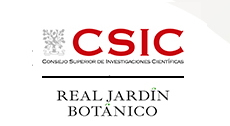Scientific Area
Abstract Detail
Nº613/1825 - An unusual supergene underlies the floral polymorphism in heterostylous Amsinckia (Boraginaceae)
Format: ORAL
Authors
Mathias Scharmann1, Lisa Bartholomus1, Christian Kappel1, Jemimah Abaya1, Mark Johnston2, James Cohen3, Martin Lysk4, Terezie Mandkov4, Kristen Hasenstab-Lehman5, Matt Guilliams5, Axel Himmelbach6, Michael Lenhard1
Affiliations
1 University of Potsdam, Germany
2 Dalhousie University, Halifax, Canada
3 Weber State University, Ogden, Utah, USA
4 CEITEC Brno, Czech Republic
5 Santa Barbara Botanic Garden, USA
6 IPK Gatersleben, Germany
Abstract
Heterostyly is a polymorphism where two or more discrete floral morphs are produced by different individuals in a population. The morphs have reciprocally different placements of their male and female reproductive organs, which promotes inter-morph pollen transfer, and thus enhances outcrossing rates. Although this morphological syndrome likely evolved hundreds of times independently in plants, it is unclear to what extent repeated evolution occurred at the developmental and genomic level. Here, we focus on the Boraginaceae, a family in which gains and losses of heterostyly were frequent. Using the example of Amsinckia (fiddlenecks), we build a chromosome-scale genome assembly and integrate genetic maps, cytogenetics, population genomics and functional molecular approaches. We characterise style development and functionally validate a candidate gene, which highlights remarkable parallel evolution of developmental mechanisms with other origins of heterostyly. As predicted by theory, we find that the efficacy of natural selection is enhanced in heterostylous populations as compared to predominantly selfing (homostylous) populations. However, the heterostyly supergene of Amsinckia differs fundamentally from the relatively small and hemizygous supergenes in other heterostylous plants, because both dominant and recessive alleles are present and they involve a large inversion which captured thousands of genes. The large size is unexpected and raises the question how this supergene could be viable over long times. The lack of meiotic recombination characteristic of supergenes should lead to the accumulation of deleterious mutations in proportion to their size. We present how Amsinckia exploits several complementary processes to mitigate and avoid the risk of maladaptive consequences of the adaptive floral polymorphism of heterostyly.




